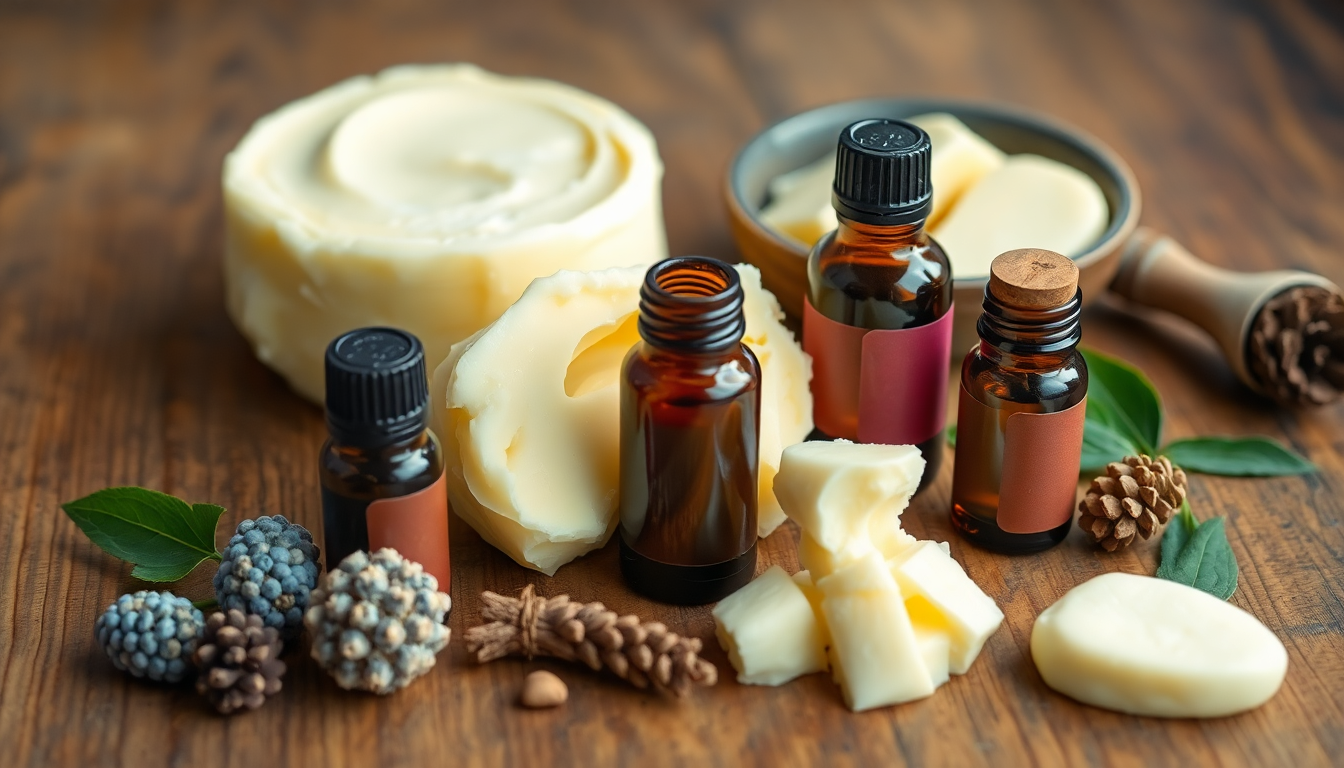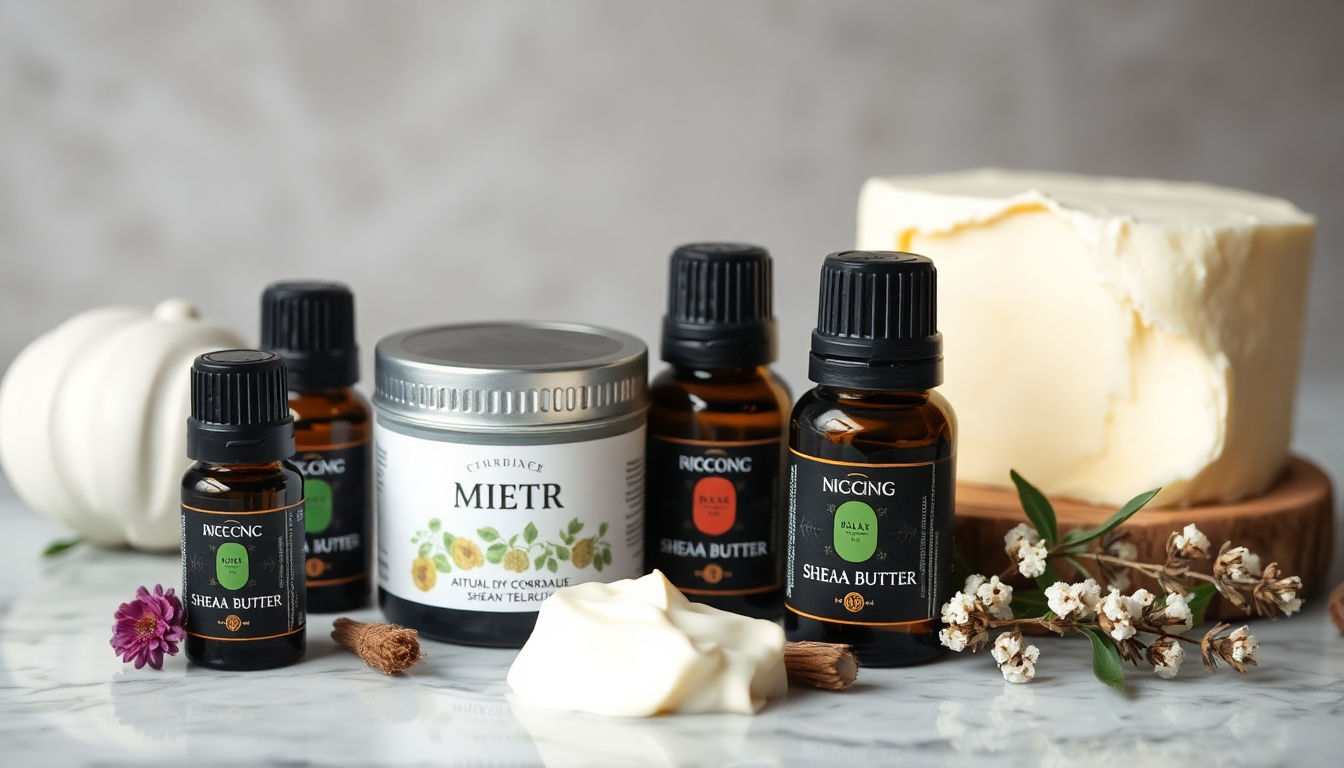Introduction
As we embrace the advancements in skincare for 2025, it’s essential to remember the foundational elements that have stood the test of time. Among these, exfoliation remains a key player in achieving and maintaining a glowing complexion. By integrating natural ingredients such as shea butter and essential oils into your exfoliation routine, you can nourish your skin effectively and naturally. This article will delve into the importance of exfoliation, the benefits of shea butter, essential oils to enhance your skincare regimen, and practical techniques to achieve the best results.
Understanding Exfoliation
Exfoliation is the process of removing dead skin cells from the skin's surface. This crucial step in any skincare routine helps to promote skin renewal and gives your complexion a vibrant, fresh look. With various exfoliation methods available, understanding the differences can help you choose the right one for your skin type and concerns.
- Chemical Exfoliation: Utilizes acids (like AHAs and BHAs) to dissolve dead skin cells.
- Physical Exfoliation: Involves scrubs or tools to manually remove dead skin cells.
- Enzymatic Exfoliation: Uses enzymes from fruits (like papaya or pineapple) to gently exfoliate the skin.
In this article, we will focus primarily on physical exfoliation techniques using natural ingredients, specifically shea butter combined with essential oils.
Why Exfoliation is Important
Regular exfoliation provides numerous benefits for your skin, including:
- Promotes Cell Turnover: Exfoliation encourages the regeneration of new skin cells, which helps keep your complexion looking youthful.
- Enhances Skin Texture: By removing dead skin cells, exfoliation leaves the skin feeling smoother and softer.
- Unclogs Pores: Regular exfoliation prevents the buildup of dirt and oil, reducing the occurrence of breakouts.
- Improves Absorption of Skincare Products: Exfoliated skin can better absorb serums, moisturizers, and treatments, maximizing their effectiveness.
- Gives a Brighter Appearance: Removing dead skin cells reveals the healthy, fresh skin underneath, resulting in a radiant glow.
The Marvelous Benefits of Shea Butter
Shea butter, derived from the nuts of the African shea tree, has been cherished for centuries for its remarkable moisturizing and healing properties. Here are some reasons why shea butter is an essential ingredient in your exfoliation routine:
- Rich in Nutrients: Shea butter is loaded with vitamins A, E, and F, which nourish the skin and promote healing.
- Deeply Moisturizing: Its rich consistency ensures that your skin remains hydrated, making it ideal for dry and sensitive skin types.
- Anti-inflammatory Properties: Shea butter has anti-inflammatory benefits that help calm irritated skin and reduce redness.
- Supports Skin Regeneration: The fatty acids in shea butter aid in cellular regeneration, which is essential for maintaining youthful skin.
By harnessing these benefits, shea butter not only exfoliates but also nourishes the skin, making it an outstanding choice for those looking to enhance their skincare routine.
Essential Oils: Nature’s Skincare Elixirs
Essential oils are concentrated plant extracts known for their therapeutic properties. When combined with shea butter, they can elevate your exfoliation experience and provide targeted benefits for your skin. Here are some essential oils to consider:
- Lavender Oil: Known for its calming and soothing properties, lavender oil helps reduce skin irritation and promotes relaxation.
- Tea Tree Oil: Renowned for its antibacterial qualities, tea tree oil is excellent for preventing breakouts and keeping oily skin in check.
- Frankincense Oil: This oil is prized for its ability to rejuvenate skin, reduce the appearance of scars, and enhance skin elasticity.
- Rosehip Oil: Rich in antioxidants and essential fatty acids, rosehip oil helps improve skin texture, brighten complexion, and reduce hyperpigmentation.
- Geranium Oil: Balances oil production and helps reduce the appearance of large pores, making it ideal for combination skin.
When selecting essential oils, ensure they are high-quality and suitable for your skin type to avoid irritation.
Effective Exfoliation Techniques
Incorporating shea butter and essential oils into your exfoliation routine can be both simple and rewarding. Here are some effective techniques to try:
- Homemade Scrubs: Combine shea butter with natural exfoliants such as brown sugar or ground coffee to create a nourishing scrub. Here’s a simple recipe:
- 1/2 cup shea butter
- 1/4 cup brown sugar or coffee grounds
- 5-10 drops of your favorite essential oil
- Exfoliating Masks: Mix shea butter with ingredients like oatmeal or clay along with essential oils for a hydrating mask that exfoliates. For example:
- 1/4 cup shea butter
- 1/4 cup finely ground oatmeal
- 5 drops of lavender oil
- Gentle Massage: Use a mixture of shea butter and a few drops of essential oils to gently massage your face in circular motions. This not only exfoliates but also promotes blood circulation and lymphatic drainage.
- In-Shower Exfoliation: Apply your shea butter scrub while in the shower to take advantage of the steam, which helps open up pores and enhances the exfoliation process.
How Often Should You Exfoliate?
Finding the right balance in your exfoliation routine is crucial. Here’s a guideline based on different skin types:
- Normal Skin: 2-3 times a week
- Dry Skin: 1-2 times a week to avoid irritation
- Oily Skin: 2-3 times a week to manage excess oil
- Sensitive Skin: Once a week or as needed; always perform a patch test before full application
Listening to your skin’s needs is essential; adjust the frequency based on how your skin responds.
Post-Exfoliation Care
After exfoliation, your skin may be more sensitive and receptive to products. Here are some tips for post-exfoliation care:
- Hydrate: Apply a hydrating serum or moisturizer with ingredients like hyaluronic acid or glycerin.
- Use Sunscreen: Exfoliated skin is more susceptible to sun damage; protect it by applying a broad-spectrum sunscreen daily.
- Limit Irritants: Avoid using harsh products or active ingredients (like retinol) immediately after exfoliating to prevent irritation.
Common Mistakes to Avoid
While exfoliation is beneficial, there are common pitfalls to watch out for:
- Over-Exfoliating: Excessive exfoliation can lead to irritation, redness, and compromised skin barrier.
- Using Harsh Scrubs: Avoid scrubs with large, jagged particles that can damage the skin.
- Skipping Moisturizer: Always follow up with a moisturizer to keep your skin hydrated after exfoliation.
Conclusion
Nourishing your skin through effective exfoliation techniques with shea butter and essential oils can lead to a radiant complexion. As we navigate through 2025, consider making these natural ingredients a staple in your skincare regimen. Remember that consistency is key, and with the right techniques and products, your skin will thank you with a healthy, glowing appearance.
Embrace the journey of skincare, listen to your skin’s needs, and enjoy the transformative effects of natural ingredients. Here’s to a beautiful year ahead filled with glowing skin!




اترك تعليقًا
This site is protected by hCaptcha and the hCaptcha Privacy Policy and Terms of Service apply.